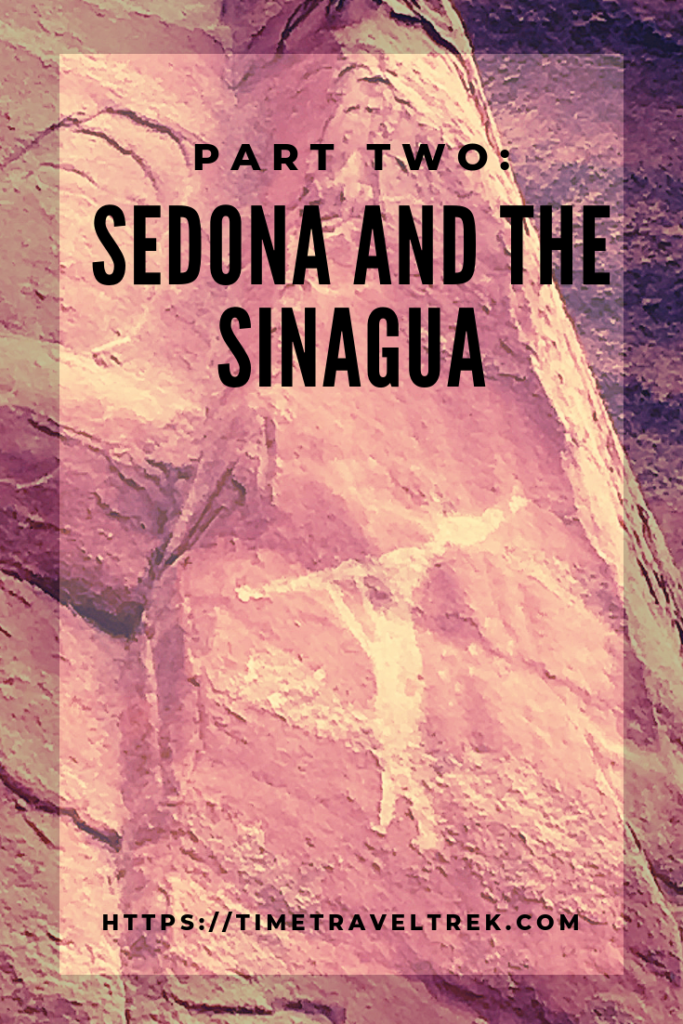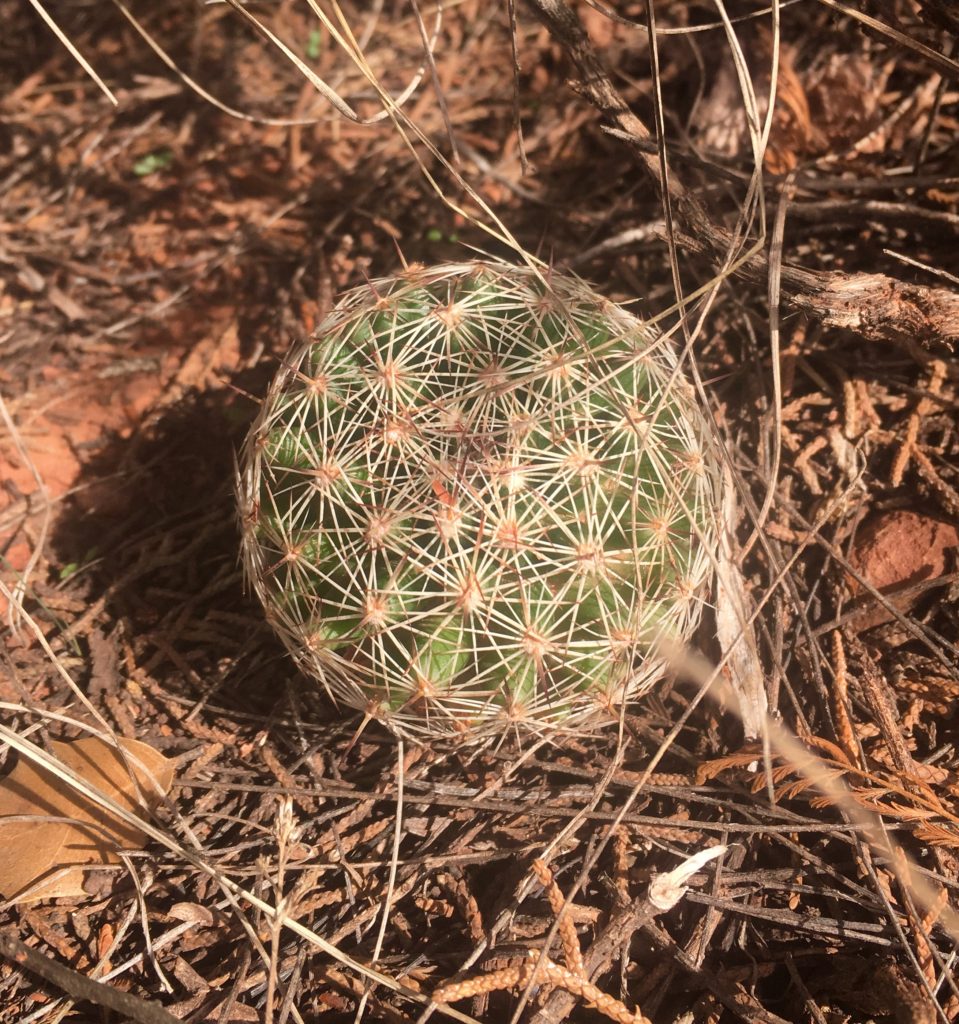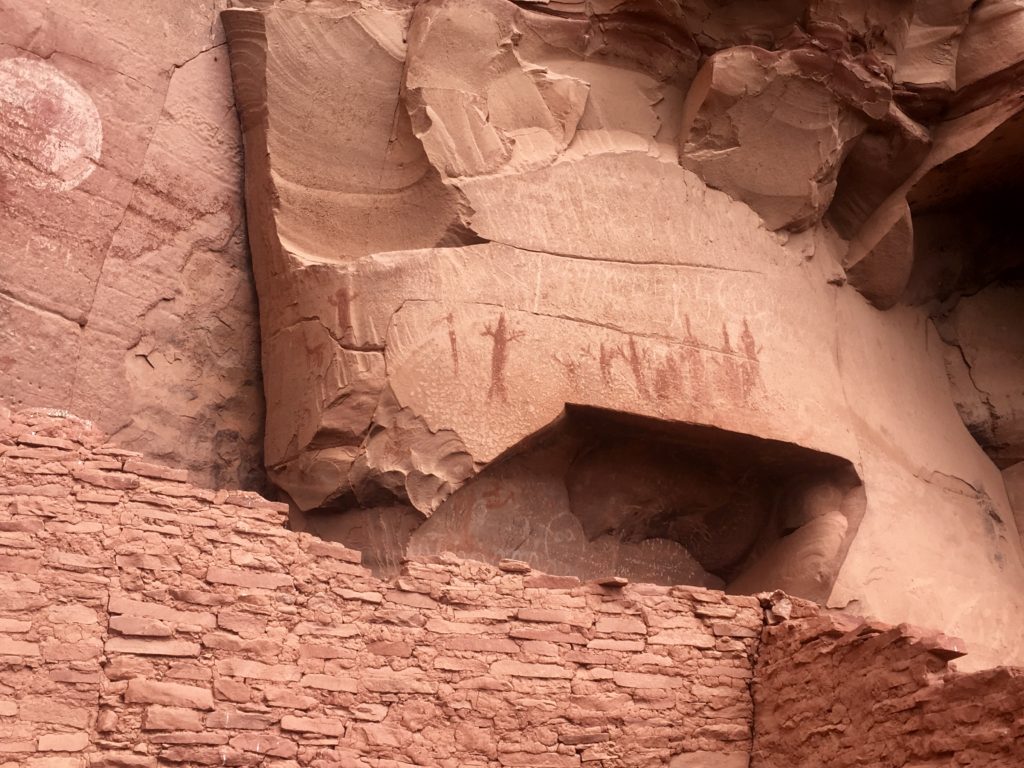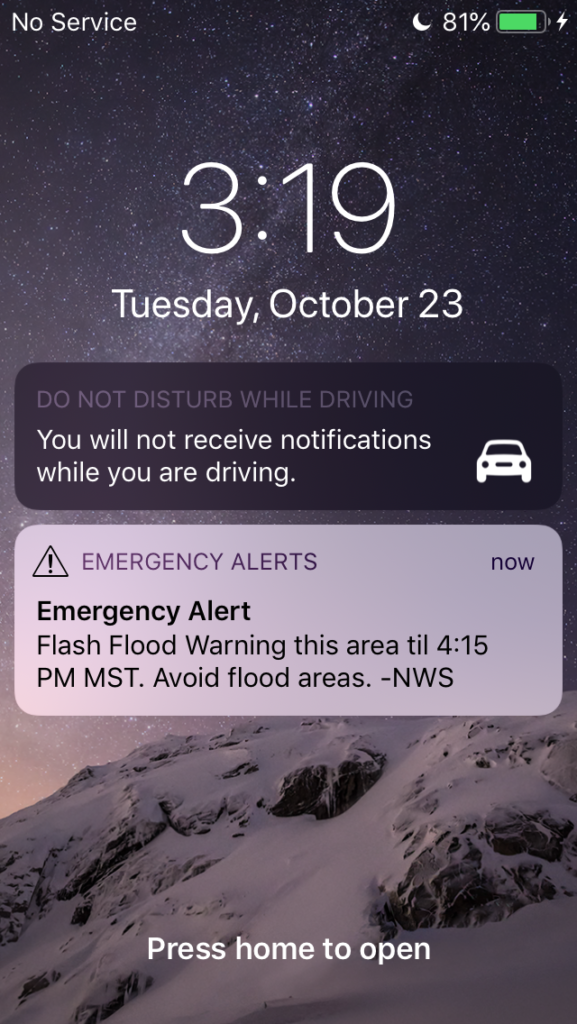After leaving our guided tour at Palatki – and an introduction to the Sinagua culture – we took the other fork in the road, to Honanki.
We were on a hunt to find quids – those yucca spitballs we never knew existed before Palatki. The dusty red dirt road we’d followed into the first archaeological site became a littled bit more rutted, a little bit more washed out in places and a whole lot more fun for all the jeep traffic heading in towards Honanki. Adventure, on!
Disclosure: This post contains Affiliate Links.

Table of Contents
Dipping into the Past
Sinagua means “without water” in Spanish. Spanish conquistadors, led by Antonio de Espejo came through the area in the late 1500s. They found the ruins of Honanki and, as a nod to the dryness of the region, called the builders the Sinagua.
Crossing over the tumble of rocks that was once a road through a creekbed, we saw proof that water may not come often to this area, but when it does, it comes in a torrent.
After about four miles on the narrow, rough, and surprisingly busy road, we reached the well-ordered parking area for Honanki. A Red Rock Pass is required for parking. The Pink Jeep Tours Company are site stewards. A small booth housed the site caretaker, a Pink Jeep employee, who had us sign in the register and gave a brief overview of the site.
Touring Honanki
There are no stationed guides at this site. As a result, we wisely bought a small booklet from the kiosk staff member. It provided brief explanations of Honanki, its sister site, Palatki and the nearby site of V Bar V.
Note: The Guide to Heritage Sites Coconino National Forest Red Rock District booklet is not online. Pick up a copy at the Honanki registration booth. It’s well worth the $4!
Heading in along the short trail up to the western-facing red cliff, we read as we walked, stopping to photograph impossibly cute cacti and other desert plants.

(Photo: Brad Kopp)
You can’t see the ruins above on the short jaunt up to the base of the cliff. Juniper and cactus give way to large shade trees. A few stone steps and the first ruins appear.
Bear House
In 1895, anthropologist Jesse Fewkes first visited the site. The name Honanki stems from the Hopi language. It means “bear house.” Fewkes and his Smithsonian team came back to Honanki in 1913 for the first official excavation of the site.
Honanki once had more than 70 rooms. It was a compact cliff dwelling, built tight against the rock. Archaeologists notes that three different cultures have used these structures. The Sinagua built the dwellings and lived in them between 1300 and 1100 AD. After their departure, the structures were used by the Yavapai and the Apache.
While a few partial walls remain, the main drawing card for visitors today is the rock art gracing the back walls. Over 2,000 pictographs (painted images) and petroglyphs (images pecked out of the rock) have been recorded in the Honanki site.

We scoured the site for handprints, sun images, bighorn sheep pictographs and – the jewel of Honanki – Kokopelli. The flute player is thought to be everything from a fertility god to a storyteller according to ancient legends.
 Ancient Ruins and Rock Art ...Shop on Amazon
Ancient Ruins and Rock Art ...Shop on Amazon  Understanding the Rock Art ...Shop on Amazon
Understanding the Rock Art ...Shop on Amazon
Pictographs – check, check, check. Quids – not a one. Like many busy sites, removable artifacts are few and far between. Maybe it’s time step a little further off the beaten path.
Homeward Bound
Heading out, we stopped at the trailhead for Loy Canyon. Hmmm…. maybe we need to come back for a longer day of hiking. For today, though, we were happy with the insight and feeling that came from visiting Honanki and Palatki.
After crossing the bigger, washed out creek that was partially restored into a driveable “road”, my phone signalled. Odd. Data was off and there was no cell coverage. I looked at the screen.

US Weather Office, flash flood warning. Another first for us! Glad we’re on the other side of the creek. Positive energy surges through us. Sedona, I take back every negative thought I may have ever had; we are captivated with your spirit, quid or no quid!
When You Go
Dead Horse Ranch State Park is a great location for exploring the past in the Verde Valley near Sedona. It’s also biking distance from Tuzigoot National Monument – another Sinagua cultural site worth exploring!
Leave a Reply